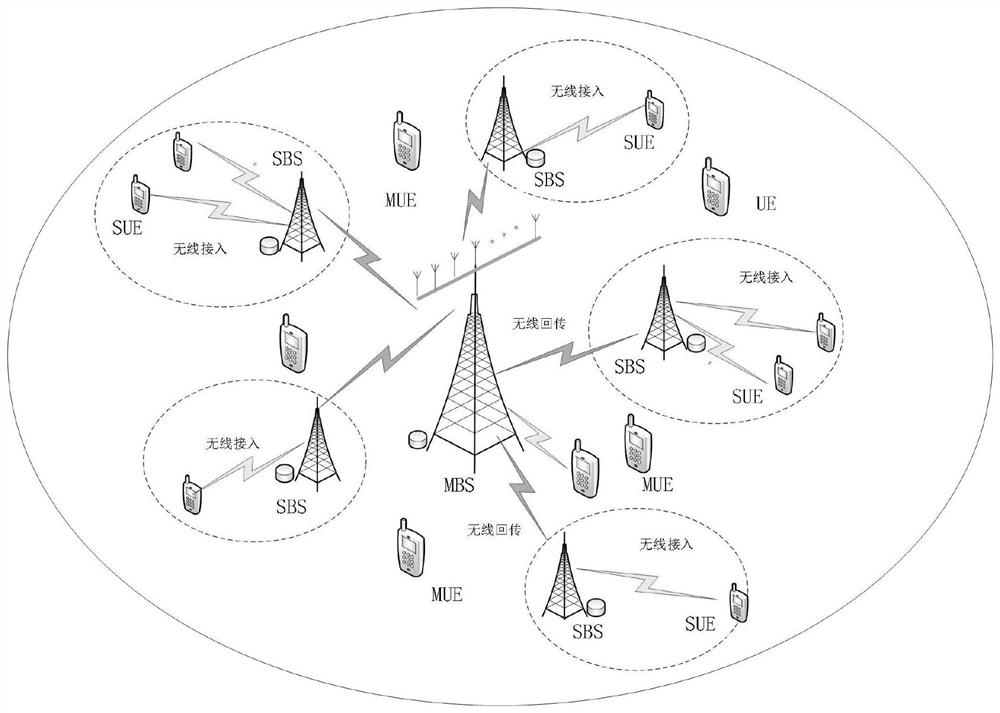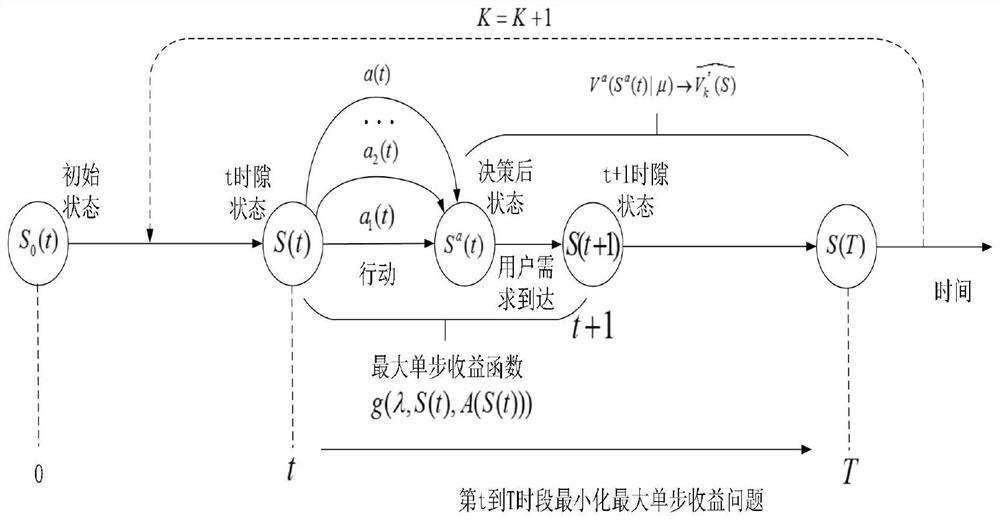Joint optimization method of wireless self-backhaul small base station access control and resource allocation
A wireless self-backhaul and resource allocation technology, applied in wireless communication, advanced technology, climate sustainability, etc., can solve the problem of simultaneous transmission of downlink backhaul link data received by small base stations, and randomness of user data packets is not considered Issues such as the impact of resource allocation on packet transmission delay characteristics
- Summary
- Abstract
- Description
- Claims
- Application Information
AI Technical Summary
Problems solved by technology
Method used
Image
Examples
Embodiment Construction
[0057] The preferred embodiments of the present invention will be described in detail below with reference to the accompanying drawings.
[0058] see figure 1 as shown, figure 1 Describes a double-hop network scene diagram in which a macro base station is fixedly deployed in the center, multiple small base stations and multiple users. In this embodiment, a macro base station is included, and a large-scale MIMO antenna array is used. The number of antenna arrays is M. In its coverage There are I-1 single-antenna wireless backhaul small base stations within the range. The set i of base stations i∈{1,2,...,I} represents a macro base station when i=1, and represents a small base station when i≠1. It is assumed that the macro base station and the small base station share the same frequency spectrum, that is, the small base station is an in-band self-backhauling small base station. Each self-backhaul small base station is equipped with full-duplex hardware, enabling the small bas...
PUM
 Login to View More
Login to View More Abstract
Description
Claims
Application Information
 Login to View More
Login to View More - R&D
- Intellectual Property
- Life Sciences
- Materials
- Tech Scout
- Unparalleled Data Quality
- Higher Quality Content
- 60% Fewer Hallucinations
Browse by: Latest US Patents, China's latest patents, Technical Efficacy Thesaurus, Application Domain, Technology Topic, Popular Technical Reports.
© 2025 PatSnap. All rights reserved.Legal|Privacy policy|Modern Slavery Act Transparency Statement|Sitemap|About US| Contact US: help@patsnap.com



